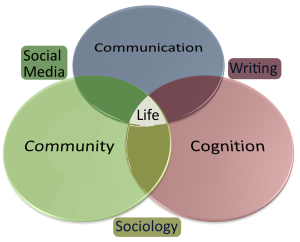 Sometime this week, I will go over 5,000 followers on Twitter. If it’s a typical day, I’ll snag a handful of people, but later than day I will lose a few who are either spammers who got their accounts busted or people who got offended that I didn’t follow them back, and revoked their interest in me. So I will probably break the 5,000 mark about six or seven times before it locks in permanently.
Sometime this week, I will go over 5,000 followers on Twitter. If it’s a typical day, I’ll snag a handful of people, but later than day I will lose a few who are either spammers who got their accounts busted or people who got offended that I didn’t follow them back, and revoked their interest in me. So I will probably break the 5,000 mark about six or seven times before it locks in permanently.
5,000 used to mean something, but now not so much.
The dynamic at play here has to do with attention. While I “follow” more than 1,400 people on the service, I really only follow a handful. I don’t go back and read every single message from each person. That kind of attention doesn’t scale. Many days, I am lucky to dip my hand into the stream and take a sip. Don’t be offended if I didn’t see the announcement of your tremendous accomplishment, there’s only so much attention to go around.
I know there are some who think I’m being pretentious for saying “5,000 doesn’t mean anything,” but it’s the truth. Because the people who follow me also follow many, many more than they used to.
Your Followers Aren’t Following, you follow?
 Late Late Show host Craig Ferguson played with this idea recently, starting his account then dreaming about how far his “followers” would go to do his bidding. They became his Robot Skeleton Army, and for a celebrity with a huge following you can get some interesting crowdsourced humor. It’s also interesting to note that a lot of Ferguson’s audience isn’t following very many, so his Tweets aren’t diluted by noise and volume.
Late Late Show host Craig Ferguson played with this idea recently, starting his account then dreaming about how far his “followers” would go to do his bidding. They became his Robot Skeleton Army, and for a celebrity with a huge following you can get some interesting crowdsourced humor. It’s also interesting to note that a lot of Ferguson’s audience isn’t following very many, so his Tweets aren’t diluted by noise and volume.
Back when I had only 500 followers or so, I might share a link to a post on this site. By watching my traffic counter, I could tell that I had generated enough interest to translate into a couple of dozen hits to my site. Those people were highly engaged and were likely to leave comments, too.
Not to say that the followers that came after are not as engaged, but they are looking at busy streams too. Having 10 times the audience, but an audience 10 times as dispersed in their attention is a net zero. You’re competing for tiny slices of time. 140 characters, and often it’s the first 40 that get scanned for content. That’s right – the first 30% of a Tweet determines whether the other 70% gets read (or if the link gets clicked.)
These days, with close to 5,000 followers, when I share a link to this site it might generate a couple of dozen clicks, and maybe another half-dozen for each time it is re-Tweeted.
Simply put – Twitter does not scale without changes to how you use it. The only way you can make the same formula work is by scaling up your number of overall followers.
A Race for Rats
I gave up on that race a long time ago, because it threatened to become an end unto itself. “It’s great you built an audience, now what is it you were planning to say to them again?”
There is a deficit of attention, but it’s not an issue of other people being too busy to “follow” me. It’s my failure to provide them with relevant or interesting information they can’t do without. If you want to be heard in the thunderstorm, you have to be either louder, more voluminous, or talk in a frequency that’s easy to tune.
And that goes for any channel, no matter how ephemeral.



I love this post because I tell people all the time that it doesn’t matter how many followers you have because a human being can only maintain 150 (at the most) relationships at one time. With Twitter, specifically, the idea is to amass thousands upon thousands of followers, but how do you manage them in order to get the most out of it for yourself? Like you said, you now have to work even harder at getting people to subscribe and come back. Retention and repeat visitors become even more important. And lastly, you have to figure out what this does for your business or your career. If there isn’t a return on your time, it’s likely not worth it.
You are about my favorite writer. You’d think you did it professionally or something.
I am wishing for an app that allow a large number of people to alternatively follow you and drop you in rapid succession for days on end … just for the ensuing blog post.
Ike,
Perfectly presented. And for the three reasons you outlined in your conclusion, it will be very doubtful I’ll adopt a firestorm of followers. I have no desire to be louder, more voluminous, or change my frequency. So, I’m happy plodding along meeting relevant people. Popularity, RTs, and clicks are all too bothersome to be bothered by.
Best, Rich
Good post, guess next “generation twitter” will limit post to 40characters with a link to the longer 140 character post in twitter;)